Academy director Jean Donaldson and staffer Kristi Benson unpack the argument that all training is “science-based” in this thoughtful conversation.
Science has given us, as dog trainers (heck, as humans) such an incredible bounty of goods. Scientists have turned their hypothesis-generating magnifying glasses on questions both broad and specific: what is reinforcement? How does reinforcement work to change behaviour? How much reinforcement is needed? What happens to an animal’s neurons when the animal is learning through classical conditioning? What cognitive tools exist in different species? How many of them do dogs own and rely upon? What can mess up a classical conditioning trial? The very idea that we can create testable hypotheses about our world and then just go ahead and test them is so phenomenal and foundational that if I take a step back and consider how differently we lived before scientific methods were cooked up, my mind simply boggles. (And this is to say nothing of how awful our lives will be if less rational ways of governing ourselves and understanding our world prevail). Imagine seriously considering that the planets are gods moving in astrological chariots across the sky, and that a virus is a punishment meted out by one of those gods for some misdemeanor. We’ve only seen a small number of images taken by the James Webb Space Telescope, a machine which relies upon, and has relied upon, such a ridiculous cornucopia of science that just considering it makes my brain stutter, but very few reasonable people are expecting to find that the planets in our solar system are gods. Science has opened a million doors to ourselves, our dogs, and our world.
One of the reasonable but thorny things about science is that it is rather stalwartly neutral. The scientific method doesn’t categorize questions as good or bad but simply sets out how to answer them—as long as they’re set up in an answerable way, of course. So, although we dog trainers rely heartily upon the work of animal scientists, we must accept that the people who come up with the questions are, well, people. They are people with their own motivations, learning histories, and biases. They are humans who need to get tenure, or humans who need to defend their dissertations, or humans who have a wheelbarrow full of things they wish were true or not true. No matter how fine-toothed the comb is that the animal ethics committee uses to review each application, they will not be able to root out the fact that the way we approach our world and the questions we ask of it are always intimately human. Just as dog trainers and all other humans are affected by fads and trends, so are scientists and students of science (and of course, those funding bodies that allow for science to happen). Although in the 21st century, this may mean that we’re hearing more about amygdalas than we perhaps really need to, when we’re taking the history of animal behaviour science as a whole, “it’s science!” can really refer to some abjectly terrible stuff.
One of the reasonable but thorny things about science is that it is rather stalwartly neutral.
It surely can. The stuff that’s been done to animals in the name of science, both when the objective is some proposed betterment of human lives (e.g. drug and cosmetics testing on animals) or understanding something about how animals, including humans, work (e.g. some mighty shite-y things have been done in the name of neuroscience and animal learning) is nightmarish. And then there’s the question of co-opting science in the defense of craptastic ethics. You put it **so** beautifully when you said science is stalwartly neutral. It reminds me of the late Stephen Jay Gould’s crafty dodge of the science vs. religion question (i.e. “who’s right about X or Y?”) by framing them as “non-overlapping magisteria” (NOMA). In his view there was no conflict between, for instance, science and Christianity’s answers to how old the universe is, because one domain deals with facts and the other with values. The is-ought questions. How *is* the world vs. how *ought* it to be. Good science, like nature, is indifferent to questions of ought.
Which brings me to dog training methods. Because there has been a push in recent years to frame us, the good guys (non-aversive trainers) as “science-based,” we’ve opened ourselves up to an argument from the not as good guys (trainers who employ aversives) that they, too, are jolly well science-based. Now, if they’ve got a smidgen of an idea of how animal learning works and so their aversives are, technically, working (decreasing or increasing behavior via, respectively, positive punishment and negative reinforcement), they are, in that respect, as “science-based” as we are. But I’d like to propose two things. One is that they’re not as science-based when it comes to the science in recent decades regarding the side-effects of aversives and their effectiveness when put head-to-head against non-aversive training. And the other is that the ought question, “how should we train dogs?” is not solely in the domain of science. It is also squarely in the domain of ethics. “It works” isn’t good enough. We’re talking about animals with a profound capacity for suffering and for joy, and whose lives mean a great deal, to them and to us.
“It works” isn’t good enough. We’re talking about animals with a profound capacity for suffering and for joy, and whose lives mean a great deal, to them and to us.
Just taking behavioral science, it’s intuitive to pretty much everybody who’s not a psychopath that, although we might be able to stop all toddlers from interrupting Zoom meetings by subjecting them instantly to the rack when they do so, that that’s not okay. But hey, positive punishment works. Loads of science tells us so. It can be super inconvenient when toddlers do that. It’s a parallel question, just different in scale, to the question of what to do about a dog whose behavior inconveniences us. What say you?
Yes, it absolutely is parallel. And I think framing questions of “should we do this?” with human examples can be so, so useful. We don’t physically harm our children (I hope) to change their behaviour anymore, and we don’t allow men to coerce and control women using violent means anymore, either—at least in theory. And I love your nod to the science of animal welfare: we do know that there is fall-out for animals, behaviourally and welfare-wise, when we use aversive training methods. There is even a parallel to human studies here: children who experience aversive “training” methods such as corporal punishment as children are not, in fact, better behaved. They’re actually less likely than their cohort members to grow up to be happy, law-abiding types.
Although I love that we can proclaim that we use evidence-based approaches and I love that we champion science, I also wonder (and worry, to be frank) when I see the conversations about “science-based” that we can come across like we don’t really understand the very essence of how animals learn. If a dog’s behaviour is changing, then they are learning, no matter the stimulus involved. That is to say, a stimulus must actually change behaviour to be considered aversive (or appetitive) in the first place. Considering animal learning theory is a codified description of how animals learn, by ignoring the fact that aversive consequences change behaviour readily we may inadvertently make ourselves appear naïve or even a bit ignorant of the real workings of the world.
Although I love that we can proclaim that we use evidence-based approaches and I love that we champion science, I also wonder (and worry, to be frank) when I see the conversations about “science-based” that we can come across like we don’t really understand the very essence of how animals learn.
To avoid this, and in clear and honest consideration of the humanity of our clients, I would encourage all trainers to be upfront and clear that philosophy and ethics matter in dog training, and they matter a great deal considering our current legislative milieu. We do not contradict our reliance and adherence to scientific principles when we crow from the rooftops that we choose kinder methods. It is true that our methods do not have the well-catalogued welfare side-effects, and it is true that our methods can be just as efficient and result in long-term behaviour change. We can, and should, make that very clear. But we can also make it clear that we choose methods that would pass muster if applied to children or would pass muster if included in an application to an animal welfare/ethics review board.
Finally, I think it’s reasonable to recognize that the same science that underlies our reinforcement protocols probably underlies someone else’s positive punishment protocols, if they’re getting the job done. I wonder if we may even help some of our trainer colleagues who still use aversives by doing so…if they were brought up in the school of thought that dogs need discipline, an alpha, or to be dominated, for example, some clarity about operant conditioning could start to crack open some doors and windows into their own techniques. They’re not using sophisticated psy-ops to control the dog and preventing WWIII. They’re simply punishing the dog.
Over the years, what have you found to be your favourite ways that your graduates fly their philosophy/ethics flags?
I couldn’t agree with you more that, first of all, it’s both intellectually dishonest and providing fodder to force-oriented trainers to claim that aversive methods “don’t work” or “shut down learning.” Comes off as religious belief rather than evidence-based. Because aversives do work. Like you say, the very same science. Vitally important for animals to avoid injury and death, which is what aversives signal are imminent. So acknowledge this and then move onto other questions, which are:
Can we achieve results we want without aversives? Yes, resoundingly answered.
Can we achieve results we want efficiently? Yes, also resoundingly answered with the proviso that the practitioner is properly trained.
How does the side effect profile of aversives use compare with avoiding their use? Unfavorably. Fear is one frequent side effect. To me, trading a nuisance behavior for fear is frank malpractice. Are there dogs that withstand aversives better than others? Unquestionably. But that’s not much of a defense of their use. We want our dogs to thrive rather than withstand.
And finally, importantly, in light of the above, is it fair, is it humane, is it ethical, to employ aversives (given that they are not necessary)? The answer is no. And I honestly don’t understand anyone who answers “sure” to this. Hurting and frightening your pet needlessly isn’t okay, period. The only way it can be sold to normal, functioning adults is this cloaking in pseudo-ethology-speak: It prevents the dog from some invented array of dominance-related problems. It builds character. Or frank dishonesty: it doesn’t actually hurt or scare him. Now here is the other side saying, technically (ABA-wise), that aversives don’t work. Because if they change behavior, they work. And they do so via stimuli that hurt or scare. So to get to your question, a good flag to fly is “Choking/prong collars/electric shock/physical intimidation/loud noises/etc. work because they hurt or frighten dogs. And so they carry side effects and are unethical. Luckily, these interventions are elective and unnecessary.” And then onto what non-aversive training looks like. Another good flag to fly is the transparency flag. Point out to consumers that the other side is engaging in obfuscating language. They are doing so because the bald truth – that they are electing unnecessary methods that hurt and scare dogs – is not defensible. In fact, I think it’s imperative that we arm people with some critical thinking about transparency in dog training or we’ll be having this same discussion a generation from now.
… is it fair, is it humane, is it ethical, to employ aversives (given that they are not necessary)? The answer is no. And I honestly don’t understand anyone who answers “sure” to this.
Clarity and transparency! Of course. A fantastic and interesting conversation as always, Jean. Thanks so much.
Thank you for your robust thinking on this vital topic!
The Academy for Dog Trainers was founded in 1999 by Jean Donaldson. Jean is one of the top dog trainers in the world and has lectured extensively in the US, Canada, the UK, Europe, Australia, New Zealand and Japan. She is a four-time winner of The Dog Writers’ Association of America’s Maxwell Award, and her seminal book The Culture Clash was named number one training and behavior book by The Association of Pet Dog Trainers. Her other titles are Mine! A Guide to Resource Guarding in Dogs, Fight! A Guide to Dog-Dog Aggression, Dogs Are From Neptune, and Oh Behave! Dogs From Pavlov to Premack to Pinker.
Kristi lives in San Clara, Manitoba, Canada, where she is the owner of Kristi Benson Dog Training. She works with clients both in person in the surrounding communities and via distance consults with dog owners across Canada. Kristi also creates online learning courses with her Academy colleagues. At the Academy, she runs special projects like the Husbandry Project and liaises with the Academy’s research teams. She also organizes the weekly Wednesday webinars offered to students and grads, finding fantastic guest presenters to compliment the webinars produced in-house, such as quizzes, interactive webinars, and curriculum-related content. Kristi also coaches and mentors students.












